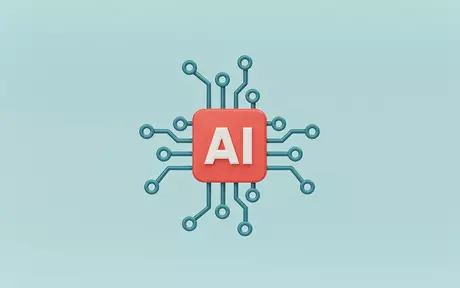Priorities and solutions for the software and IT services market
The software and IT services market is a landscape of constant change and competition, and the economic downturn has done little to impede the momentum of investment in the sector. Investments are not only robust but also strategic, as firms actively seek ways to stay competitive in the market. According to a Unit4 commissioned report by PAC, a leading European analyst firm, total spending on software and IT services will increase at a CAGR of 6.6% over the next five years to €650bn in the EMEA region, while spending on areas such as Software-as-a-Service (+16%) and public Cloud/IaaS (+19%) will far outstrip the overall market.

This blog explores the challenges, priorities, and solutions that will help IT services firms keep up with emerging trends in the coming year.
Investment in AI as a business growth strategy
The quest for supremacy in the software and IT services sector is well and truly underway, with AI fast becoming the main driver of this pursuit. Investing in technologies like automation and AI is now more than a trend - it is a strategic necessity that can help IT services maintain relevance, keep up with customer demands, and gain a competitive edge.
AI is not just a buzz word, AI is offering possibilities for automating operations, enhancing productivity, and discovering untapped business avenues. The adaptability of AI has made it a focal point for investment, underlining its value as a growth propeller in the ever-evolving tech arena.
But the journey is far from easy, and the real challenge lies in harnessing the full potential. As technology develops at an unprecedented pace, IT services must stay abreast of the changes. Companies need to master the complexities of AI, delve deeper into its capabilities, and comprehend its future trajectory. Only then can they fully exploit it to propel their business forward.
The winners will be those who can adapt quickly and align their AI strategies with the rapid pace of innovation. According to the PAC report, PwC is investing $1bn in AI over the next three years, including training existing workers in AI capabilities. Accenture is channeling $3bn into its Data and AI practice over the same timeframe, while Deloitte has launched a new Gen-AI practice, built in part around an alliance with NVIDIA.
Click to read Increasing Excellence in IT with ERP (2023)
Utilization rates, recruitment, and scalability
Navigating the terrain of technology investment is not without its hurdles for IT services. From grappling with high utilization rates to tackling recruitment challenges and achieving scalability, IT firms have their work cut out.
Resource allocation is pivotal in managing utilization rates, which becomes particularly complex in the dynamic tech ecosystem. As technology continues to evolve at an impressive pace, the pressure is on to ensure resources are put to optimal use and not stretched too thin.
Finding and retaining the right talent is another key challenge. As new technologies continue to emerge, attracting professionals with the right skills to work with these tools becomes a tough task.
A growing number of people want to work for firms that are leading the way with technological innovation. And there is a growing trend toward multigenerational teams with a mix of new, middle, and late career stage professionals working together to provide diverse perspectives on problem-solving. Organizations that rely on billable resources must ensure that they are giving their people opportunities to work with the latest and greatest technology while ensuring high utilization rates and minimizing employee burnout.
Scalability, agility, and visibility are other areas IT services can struggle with. Keeping pace with the industry's velocity means perpetually enhancing and updating their solutions. This constant cycle of evolution requires strategic planning, efficient processes, and robust systems that can accommodate growth.
While these challenges are formidable, they are not insurmountable. The right strategy, approach, and investments can help IT services turn these hurdles into opportunities.
For organizations, it’s a win-win – harnessing the power of new technologies can improve utilization rates, make employees as productive as possible, and attract the right top talent that can help firms scale effectively.
The importance of technology adoption
Embracing new technologies isn't just an option for IT services; it's an absolute necessity for survival. Seamless incorporation of emerging technologies such as AI, automation, and data analytics into operations elevates service delivery and acts as a springboard for innovation.
But, like all good things, technology adoption does not come without its unique challenges. One of the most daunting is training. Keeping the workforce updated and well-versed in new tools and platforms is critical. Investment in people is as important as the investment in the tech.
Security concerns often arise with the implementation of new technologies, putting the onus on IT firms to demonstrate the robust safeguards Cloud-based technologies provide to prevent data breaches and cyber-attacks.
A hurdle not to be underestimated is the financial impact. High implementation costs often act as a barrier, particularly for smaller firms. However, it’s crucial to look beyond the initial outlay and focus on the long-term cost savings and benefits these technologies bring.
IT services supplier landscape continues to consolidate
This movement towards consolidation is fueled by a variety of factors, including the need for greater efficiency and broader service offerings.
Mid-sized IT service providers have found that by acquiring smaller firms with specialized skills, they can quickly expand their portfolios and enhance their value proposition. The primary driver of this consolidation trend is the increasing demand for end-to-end service providers who can offer comprehensive IT solutions under one roof.
Companies seek partners who can manage a large portion of their IT lifecycle, from development and deployment to maintenance and support. This leads to strategic mergers and acquisitions as players vie to enhance their capabilities and stay ahead in the game.
Consolidation isn't just about size and scale; it's also about adaptability and agility. With technologies such as AI reshaping the IT landscape, companies need to keep pace. By consolidating, IT firms can pool their resources, share knowledge, and embrace new technologies more effectively.
The increased pace of consolidation has also led to an inevitable shakeup in the supplier landscape. For clients, this has resulted in a narrower pool of choices, with a focus on larger, more versatile providers.
This is not necessarily a disadvantage. While there may be fewer players in the field, those that remain are better equipped to offer a wider range of services, deeper expertise, and the stability that comes with size.
And there is still a place for smaller, specialist IT firms which offer ‘best of breed’ solutions. Private equity interest in the software sector remains high, with a strong appetite for these smaller, specialists, especially in areas such as data analytics, AI, and cyber security due to the lack of available talent in the market.
Sustainability and social responsibility
Growing consciousness around the environmental footprints of technology has driven firms to incorporate green IT and sustainable practices into their business models. The aim is not just to protect the planet but also to boost their brand image in the market.
The concept of social responsibility is gaining momentum, particularly around topics like ethical data management and privacy protection. As society becomes more digitally reliant, businesses are under greater scrutiny to manage data ethically and responsibly.
Investing in such practices isn't just a matter of adhering to regulations or avoiding negative publicity. It goes beyond that. It’s about acknowledging the company's role in a larger societal context.
Companies that prioritize sustainability and social responsibility not only enhance their reputation but also engage customers on a deeper level. Demonstrating a commitment to these values is a powerful way to foster customer trust and loyalty. It can also serve as a significant differentiator in a highly competitive market, setting firms apart from their competitors for both clients and potential talent.
To understand how Unit4 can help Software and IT Services firms stand out in a competitive market, you can find out more about our suite of solutions here.
Read the report: Professional Services A Benchmark for 2023, PAC.






